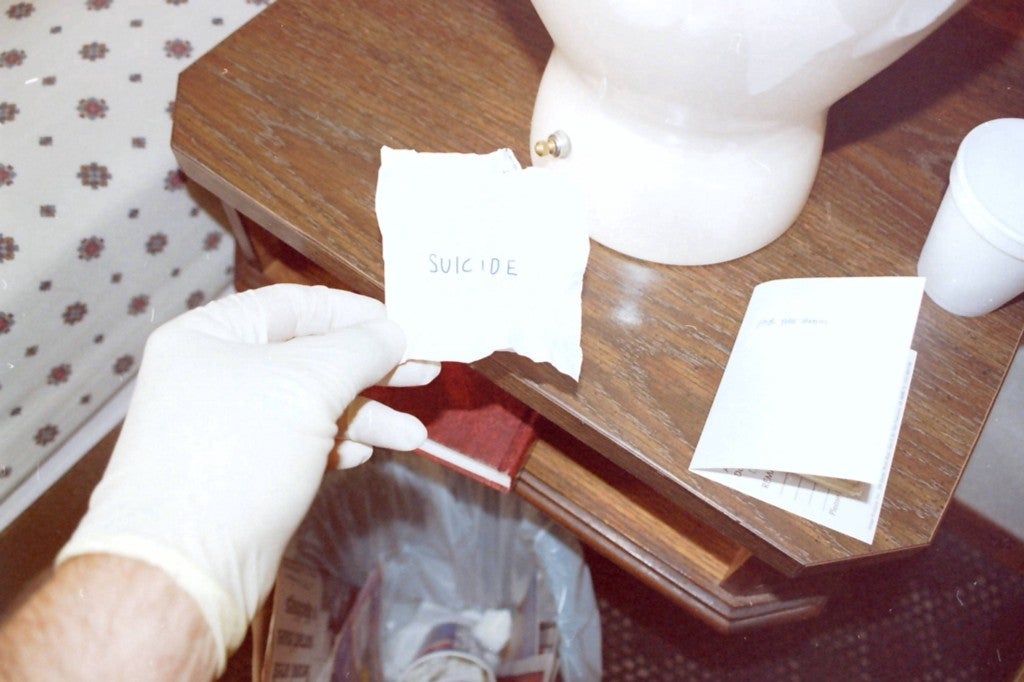Editor’s Note: This story was first published on February 25, 2016. For more on the Stevik case, see this May 2018 update.
On Friday, September 14, 2001, Lyle Stevik arrived at an average motel in a sleepy, nondescript town close to Washington’s Pacific coastline. It was a typical September day: 52 degrees and drizzly. “Welcome. Surf’s Up. Life Is Good,” read the shabby sign outside the entrance to the Lake Quinault Inn, a cheerfully optimistic motto for such an ordinary place.
Stevik, who appeared to be in his twenties, did what countless guests had done before. He grabbed a pen and scribbled his details on the hotel’s registration slip:
Name: Lyle Stevik
Address: 1019 S. Progress Ave.
State: ID … Meridian
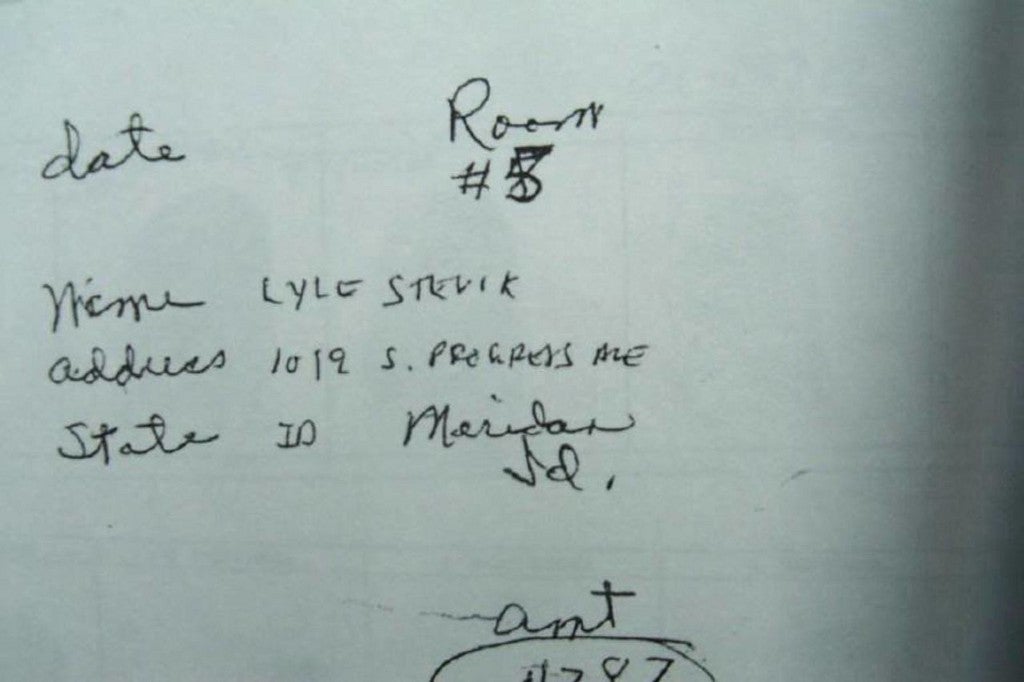
Nothing about this was exceptional, especially given the context. Three days earlier and 3,000 miles away, three planes smashed into the World Trade Center and Pentagon, killing 2,996 people, injuring 6,000 and setting off a national security crisis. 9/11 made the history books; in the isolated town of Amanda Park, 9/14 was seriously dull.
In 2001, Lake Quinault Inn was still a family affair: Barbara — affectionately known as Aunt Barb — on front desk duty, was clerk-cum-manager; her nephew, Gabe, owned the motel and adjacent store. The Inn, built in the 1960s, with six rooms in the main building and two in an annex, had slid into disrepair. But to the few travelers to stay in this picturesque patch of the Olympic Peninsula, it didn’t matter. The rooms were decent enough, and, at less than $50 per night, they were the cheapest in town.
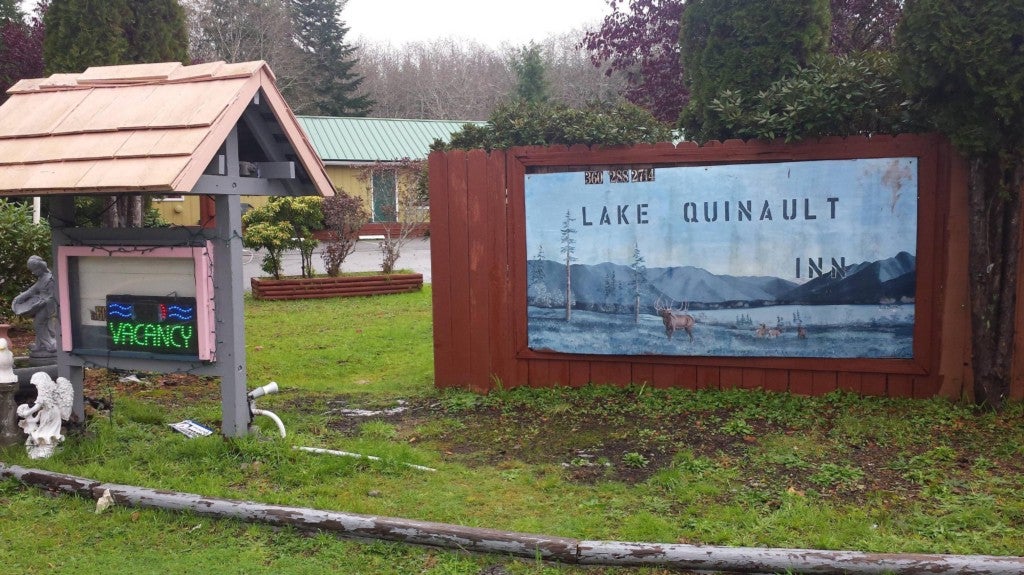
Aunt Barb gave Lyle the key to room eight in the motel’s annex, and he paid in cash. Behind it was Olympic Mobile RV Park, a miniature metropolis of trailers, broken cars and spare tires. Inside, furnishings included a double bed, a dusty carpet, nicotine-stained vinyl curtains and a glass dressing table — a steal for $43.87.
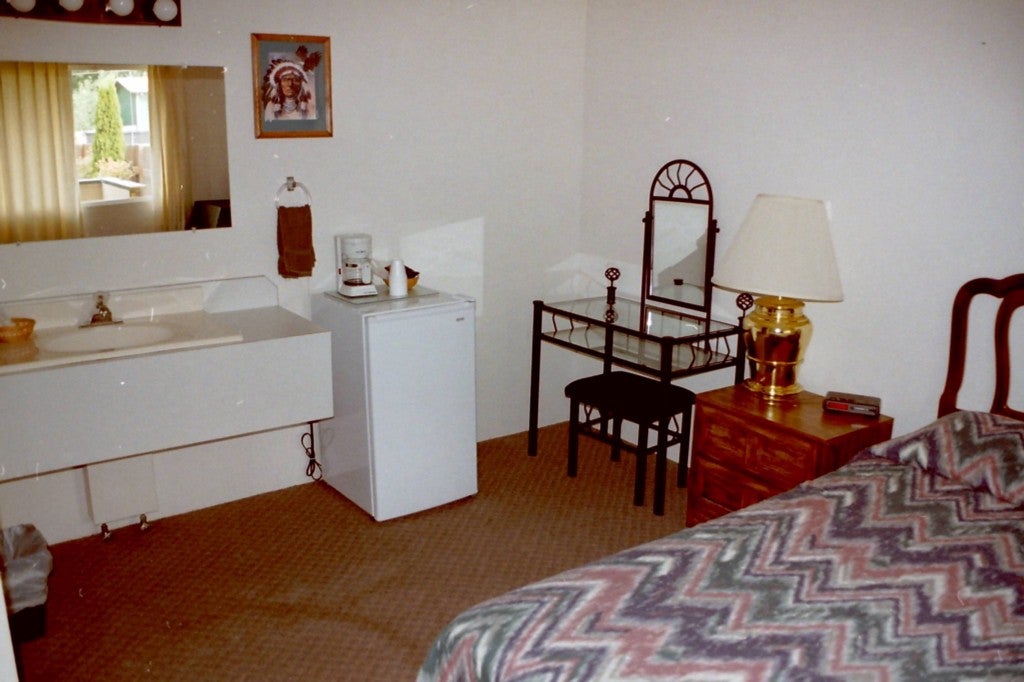
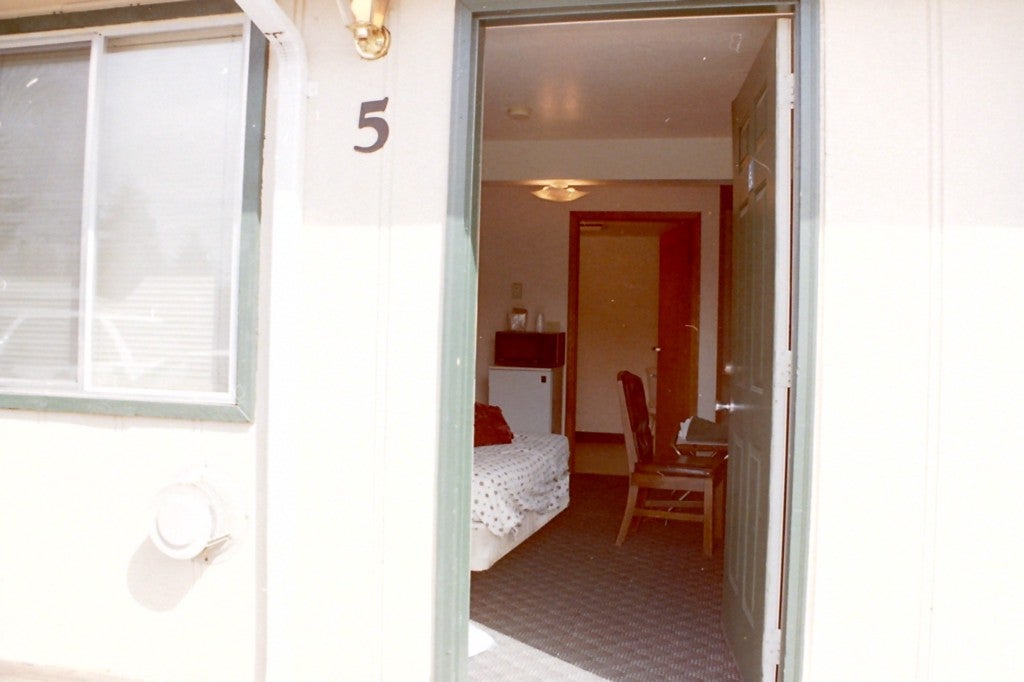
Lyle returned to the front desk just 60 minutes later — flushed, agitated, disturbed. Apparently, the trailer park was too noisy. He wanted to switch rooms. Even though she had just met him, this second encounter was far more memorable. Lyle avoided eye contact; he was acting weird; he gave Aunt Barb the creeps.
She handed him the key to room five, smack-dab in the middle of the main building, overlooking a tiny car lot. It was just like room eight — the carpet dusty, the curtains stained — but Lyle liked room five. He slept there that night. And the night after.

On Monday, September 17, it was 52 degrees and drizzly — just like the days before. Maricela, the Inn’s housekeeper, knocked on Lyle’s door. No answer. It was 11:30 a.m. and he was late to check out. She knocked again. Nothing. Maricela only had one room to clean that morning, which was sadly becoming the norm. The Inn didn’t have a website — it still doesn’t. Gabe relied on fishermen, lured by rainbow trout and wild steelhead in the Quillayute River, to fill the rooms. Fishing season finished in August, and Amanda Park was virtually deserted.
Maricela twisted the handle and slowly stepped inside. She found Lyle kneeling in an alcove in the room’s left-hand corner: his back to the door, his arms by his sides, his head tilted back, his eyes open and pointed toward the ceiling. On Saturday, he had asked her for extra towels and three were scattered across the walnut-stained wooden desk. Three more, still folded, were neatly positioned on top of a chair. On Sunday, he told her he didn’t want his room cleaned. Now he was silent, peaceful and unresponsive.
Maricela wondered if he was busy praying, but something didn’t feel right. Aunt Barb was in Olympia — 87 miles away — so Maricela phoned Gabe, who rushed to room five and cautiously crept toward the kneeling figure in the corner. Lyle still hadn’t moved. His wrists were limp, his fingers relaxed, his loose Levi’s jeans hung off his skinny waist.
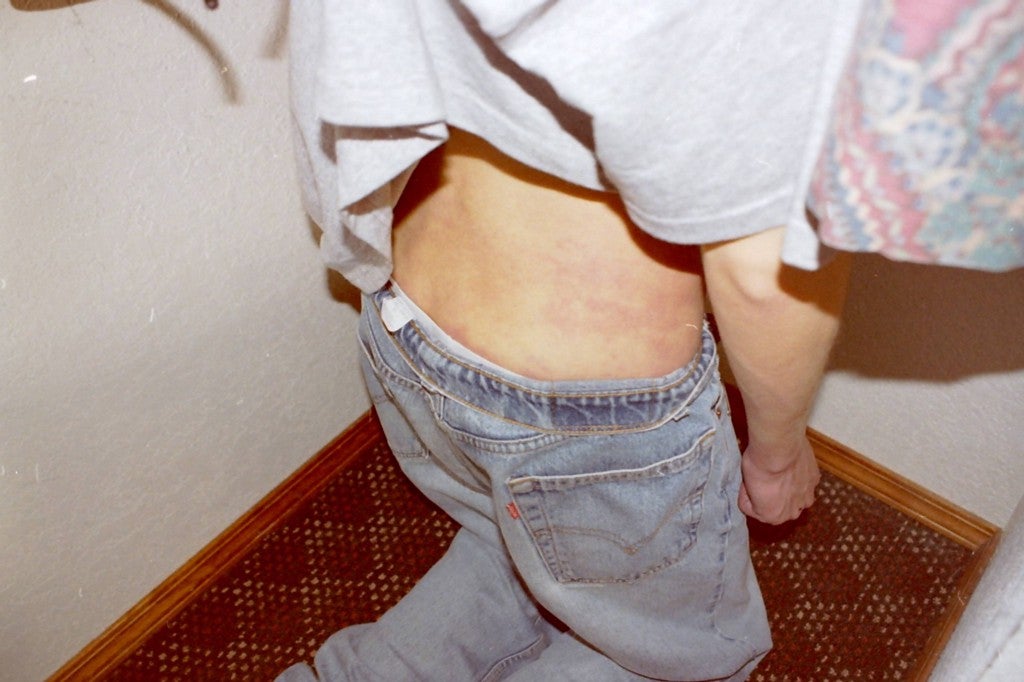
Gabe moved closer. Upon closer inspection, Gabe could see a leather belt was tightly wrapped around his throat on one end, and attached to the room’s metal coat rack on the other. Lyle’s knees were off the ground. He wasn’t breathing. He had hanged himself.
On a nightstand, there was a folded comment card with the words “FOR THE ROOM” scrawled on the back. Inside were eight crisp $20 bills, settling his bill for the previous two nights, with a generous tip for good measure.
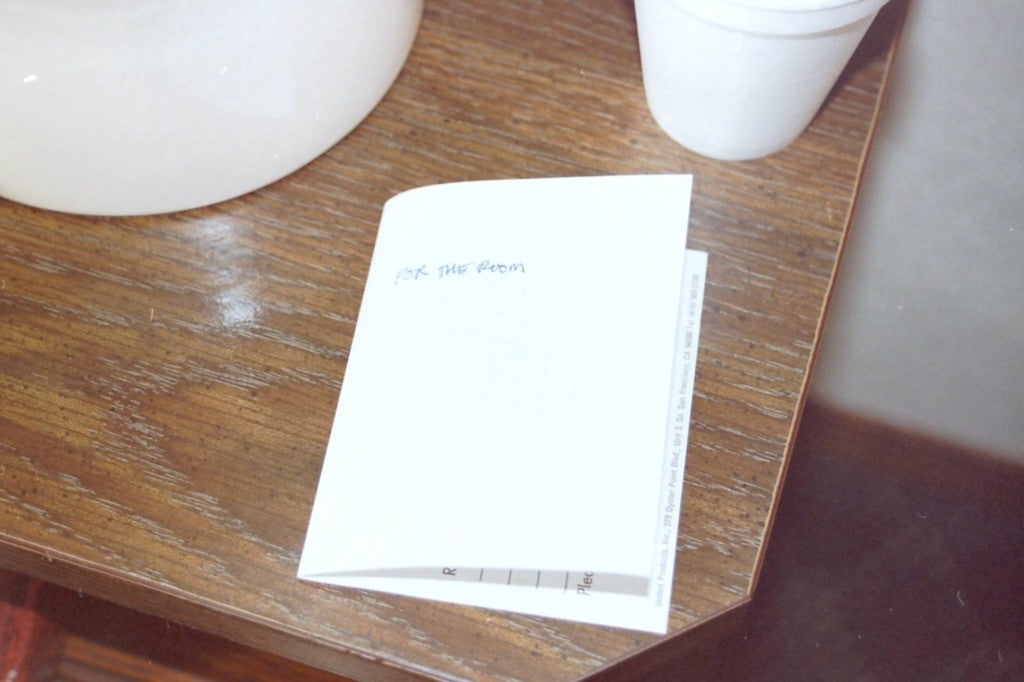
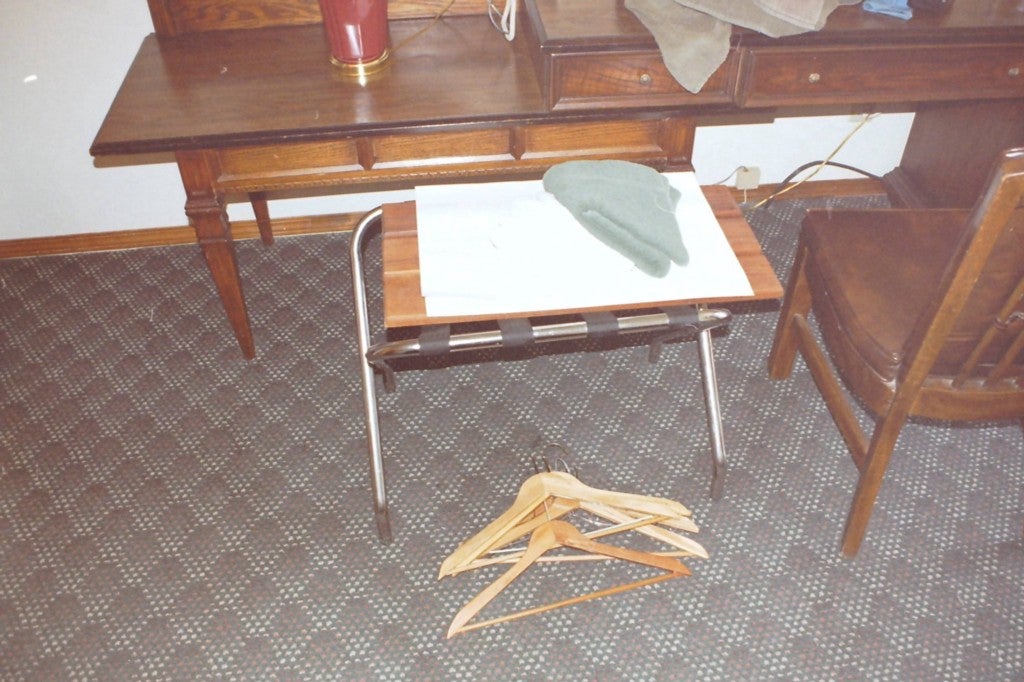
Gabe called 911. A paramedic arrived, then local law enforcement. Lyle’s emaciated corpse — at 6’2”, he weighed 140 lbs — was referred to the local coroner. Lyle left no identification in room five: no bank card, no driver’s license, no passport. A police detective asked Route 60 bus drivers if they had noticed him. (They hadn’t.) Another asked Quinault Indian Nation members if they knew him. (They didn’t.) Nobody in Amanda Park had reported a missing person that week. Or any of the weeks afterward.
Law enforcement ran Lyle’s DNA, dental information and fingerprints through FBI-administered databases with data on millions of offenders, collected from crime scenes and from crime victims. Nothing generated a match. The address he had written on the registration slip — 1019 S. Progress Ave., Meridian, Idaho — belonged to the Best Western Plus Rama Inn, more than 600 miles away. The manager, who had worked there for six years, didn’t recognize his photos.
Lyle Stevik wasn’t in any database, phone directory, search engine, electoral roll or census.
Lyle Stevik didn’t exist.
“I’ve worked on many suicides,” wrote former police detective Lane Youmans on Websleuths, a popular forum for unsolved mysteries. “But I’ve never had one who made sure his bill was paid.”
Youmans, now coroner for Gray’s Harbor County, which includes Amanda Park — was familiar with mysterious murders and shocking suicides. But this assignment was different; this case was utterly bizarre.
When Youmans arrived at the Inn, he wandered around room five, placing his styrofoam coffee cup on the nightstand. Lyle was still in the corner, the belt still coiled around his neck.
He took pictures of the room: “The bedspread was off the bed and hung over the only window. Clothes hangers were on the floor by the chair. The light was on in the bathroom, the door partially open.”
He noticed that pillows were stuck between the clothes hanging area and the walls on both sides. Perhaps Lyle devised a makeshift punching bag (knowing he would thrash and flail in his final excruciating minutes) or an impromptu sound barrier so neighboring guests wouldn’t hear his frantic screams.
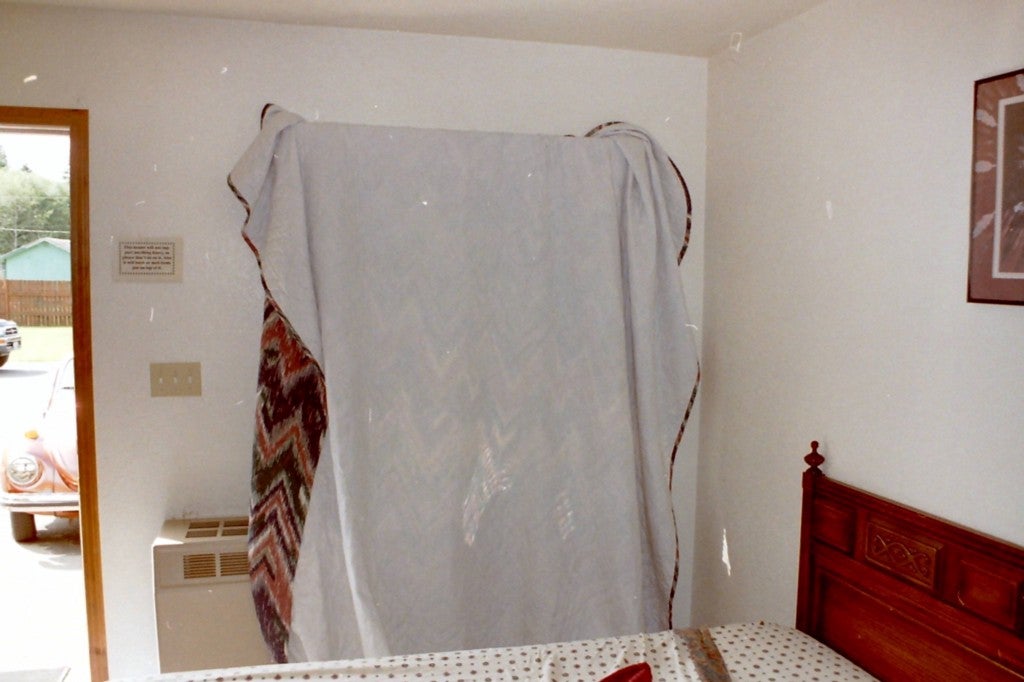

Lyle’s suicide would have been torturous. The coat rack was only four feet off the ground and Lyle’s legs and feet were in a perfect kneeling position. He had to resist the overwhelming, visceral urge to stand up as his body went into survival mode — suggesting he chose a “partial hanging,” where the weight of his head acted as a constricting force, blocking his jugular veins and shutting down cranial circulation.
“During suspension hangings, there are always involuntary jerks and movements. [An] internal fight for survival,” described Youmans.
In Lyle’s right front pocket, a pen was clipped to his light-blue washed jeans. In his right rear pocket were eight $1 bills. In a nearby desk drawer was a new tube of Colgate toothpaste, an Oral-B toothbrush (still in its packet) and some loose change. On the nightstand shelf, a rosy red Gideons Bible — the Inn had placed a copy in every room — with a bookmark pressed between pages 1050 and 1051, where the first passage, John 12:33, read: “This he said, signifying what death he should die.”
In a small black trashcan under the nightstand was the previous morning’s Daily World — a local newspaper that served Gray’s Harbor — and an empty plastic Pepsi cup. Next to it, a crumpled piece of thick white paper, no bigger than six inches wide, that read “SUICIDE” in block capitals.
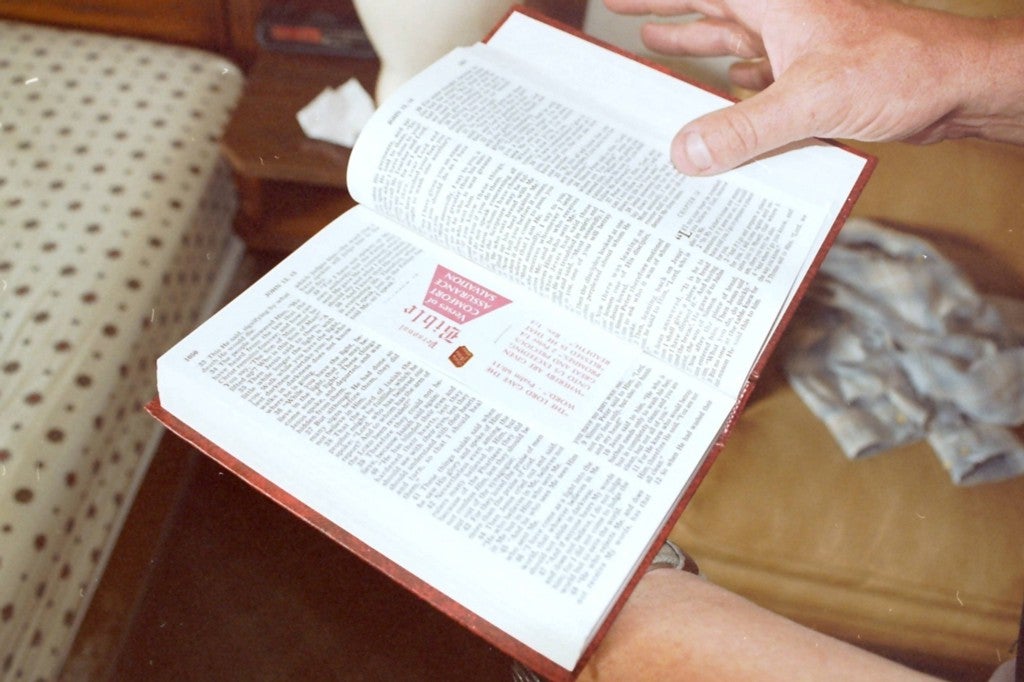
Gabe handed Youmans the registration slip that Lyle filled out at the front desk. The handwriting looked different than the scrap of paper found in the trash. “Lyle completed the registration form and the comment card with his usual handwriting. I believe he wrote out ‘suicide’ in block letters to see how it looked … because he wasn’t sure if he had spelled it correctly, or he had written it as a sign so that whoever found him would know that it was a suicide,” speculated Youmans. “He then realizes that it will be obvious what has happened so discards the note.
“The handwriting style is one I’ve seen from people with a medical background.”
Perhaps Lyle was a doctor. Or a surgeon. Even if he wasn’t, his clothes suggested he made a decent living — black Timberland boots (size 10), Levi’s 500 jeans (36’’ waist, 34’’ length), a gray Fruit of the Loom T-shirt (XL), and Hanes underwear.
“I always felt Lyle was from a middle-upper income family,” wrote Youmans. “There were no signs he was involved in manual labor, no injuries, articulate, clean, took care of his appearance.” Except for the fact that he was extremely thin. His clothing hanged from his frame. All the notches in his belt — with a sparkling metal Western-style buckle and “GENUINE LEATHER” imprint — had been used, as though he was losing weight and kept tightening it. It was designed for a 31” waist, five inches smaller than his Levi’s.
Perhaps Lyle discarded his belongings before he arrived in Amanda Park, Youmans thought. Maybe he hurled his valuables — his bank card, his wallet, his identification — into nearby Lake Quinault. But they didn’t search the lake; they didn’t have enough evidence that anything was in there. Plus, Youmans wrote, “Even if we did, it would be like searching for a needle in a haystack. It is deep and very dark.”

Youmans collected Lyle’s fingerprints, slipped his corpse into a body bag and waited for the coroner.
“Someone would have called if he was local,” he wrote. “No, I think he wanted to disappear. He went as far from home that he could. I always told people that Gray’s Harbor isn’t the end of the earth, but if you stand on your tiptoes, you can see it from here.”
Still, Lyle was someone’s son, friend, colleague, brother, nephew or father. Someone out there had to be looking for him. “I’ve investigated several other suicides where people have come here from out of the state and had disposed of their identification,” Youmans wrote. “I’ve always been successful in identifying them — until Lyle.”
On Wednesday, September 19, it was still 52 degrees and drizzly. Dr. Daniel Delove — a coroner in another small town 50 miles south of Amanda Park — carefully positioned his scalpel and toothed forceps. Lyle was laying on a slab in the center of Delove’s bright and sterile autopsy room. His clothes had been removed, his body completely naked apart from the frayed leather belt still wrapped around his neck.
Delove looked down at the corpse. Lyle had partially healed abrasions on his knuckles. He had an appendectomy scar. He was circumcised. He guessed he was about 25 years old.
The rest of his body was a blank canvas.
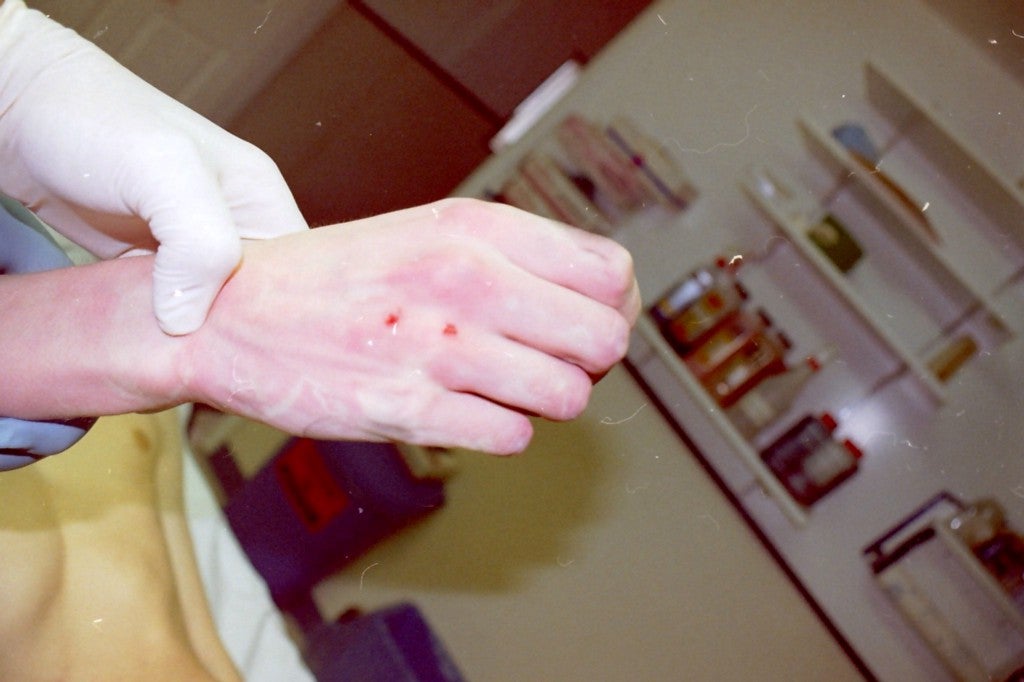
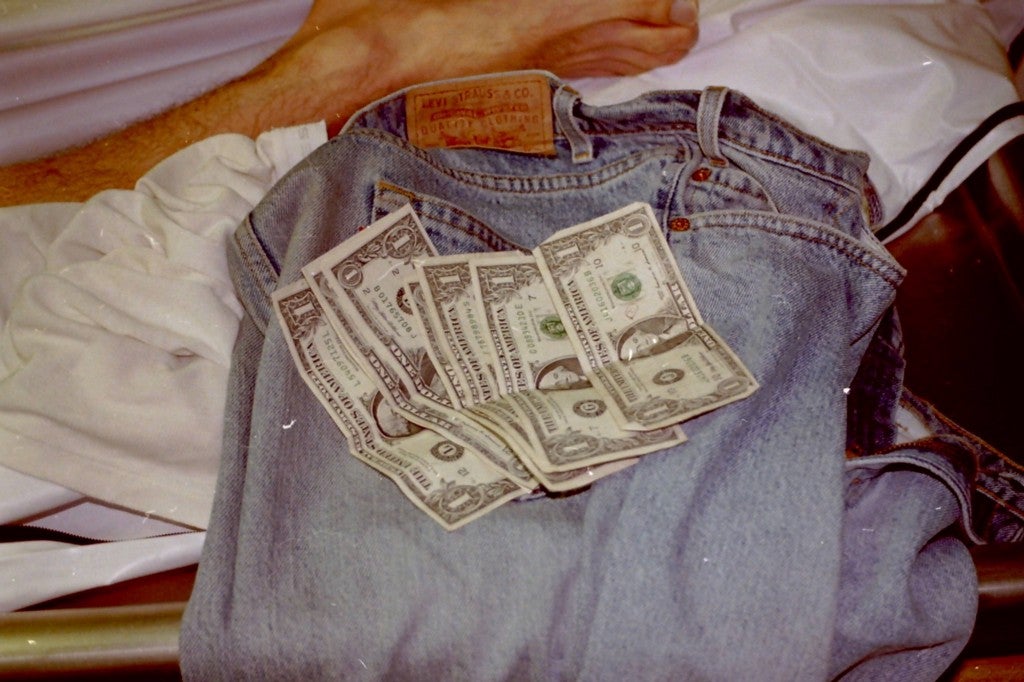
Lyle had no tattoos, no birthmarks, no tan lines, no visible identifiers. There was also nothing medically wrong with him: His internal organs were in good shape. His lungs were healthy, his fingernails clean and well-kept. He wasn’t a smoker. Delove took urine and blood samples. Lyle was sober when he hanged himself.
Notably, his teeth were in excellent condition. Four had been removed — two upper premolars, two lower — probably to make room for braces, the result of expensive orthodontics. His clothes — the Fruit of the Loom tee, Hanes underpants, Levi’s — remained unsoiled.
Delove filled out his autopsy report.
Lyle’s eyes were hazel. His black hair, combed straight back, had been recently trimmed. He had sparse stubble. He had a small mole on the left side of his chin. Something slightly distinguishing stood out to Delove (and later, the internet): His earlobes were attached.
His ethnicity couldn’t be determined, nor his nationality. He might have been Hispanic or Native American or Middle Eastern or Caucasian. It was difficult to tell.
Aunt Barb thought he had a “slight” Canadian accent, but she couldn’t be certain. When Youmans submitted Lyle’s details to the Royal Canadian Mounted Police, the attempt was futile: just like in the U.S., his fingerprints and DNA matched nothing in their system.
Delove finished his autopsy report, signed his name and packed away his utensils. The Doe’s death certificate was vague and void.
Cause of death: Asphyxia.
Place of injury: Motel room.
Birthdate: Unknown.
Residence: Unknown.
Occupation: Unknown.
Lyle was buried in an unmarked grave at Fern Hill Cemetery — 12 miles away in Aberdeen. He didn’t have a funeral. Or a tombstone. Or any flowers. Still, nobody knew who he was.

Months passed by, then years. The investigation went cold. Then, in 2006, Lyle’s case gained traction online. Armchair detectives had started to painstakingly comb through the available evidence — trading thoughts, theories, and facts with other sleuths on internet forums. It didn’t take long before Lyle went global, his case attracting readers from Florida to Finland. And everyone had an opinion. But they also shared a collective goal: To identify the Doe and bring him home.
Over the next decade, his myth grew to unimaginable proportions: two Facebook groups, a Wikipedia page and a dedicated subreddit. He became the subject of haikus and fan fiction, even an unlikely crush.
Most importantly, Lyle had a sub-forum on Websleuths, a hodgepodge of speculation, postulation and possible matches collected from missing person databases like NAMUS and the Doe Network. They cross-referenced his vital statistics, hoping to uncover someone with a similar height, weight, and Lyle’s attached earlobes: not quite rare, but still, something distinctive.

Patrick Beavers, a 24-year-old from Jerome, Idaho, who had vanished in 1997, was an early favorite but was ultimately nothing more than a resemblance. He was officially ruled out in December 2015.
Ilija Dukic, a 26-year-old Croatian soldier, who went missing in battle, shared Lyle’s jawline and had a similar mole on the left side of his chin. But he had been ruled out three months earlier.
Could Lyle be Craig Alexander, Steven Needham, John Depatie, Todd Fraser — four young men who disappeared for one reason or another?
No, according to authorities: none of them were Lyle.
Two schools of thought quickly emerged: Those who thought “Lyle Stevik” was the real name of someone who had eluded public directories, internet search results and police records (either intentionally or because he was foreign); and those who thought it was a pseudonym. “I wonder if Lyle was an illegal immigrant,” asked one poster in the former camp. Perhaps he was Scandinavian: “The surname ‘Stevik’ is popular in Norway,” suggested another. “Or a derivation of the Balkan ‘Stevic.’”
Those in the pseudonym camp had their own compelling evidence, more literary than etymological. In the 1987 Joyce Carol Oates novel You Must Remember This — a 448-page saga that explores misogyny, poverty and incest in 1950s New York — 15-year-old Enid Maria develops passionate feelings for her uncle, a professional boxer, much to the chagrin of her father, Lyle Stevick — with a “C” — who slides into depression, throws a rope over a beam in his basement and attempts to hang himself. Depending on which way you looked at it, the parallel was either scarily uncanny or utterly tenuous.
Youmans himself had pondered the possible JCO connection too: “I believe Lyle read it, possibly in college, and associated himself with the character.”
Randy Souther, who maintains Joyce Carol Oates’ official website, was less enthusiastic. “I’ve heard of this, but I can’t make a relevant connection,” he told a Websleuths poster. “Lyle Stevick in the novel does not commit suicide. No major character in the book dies.”

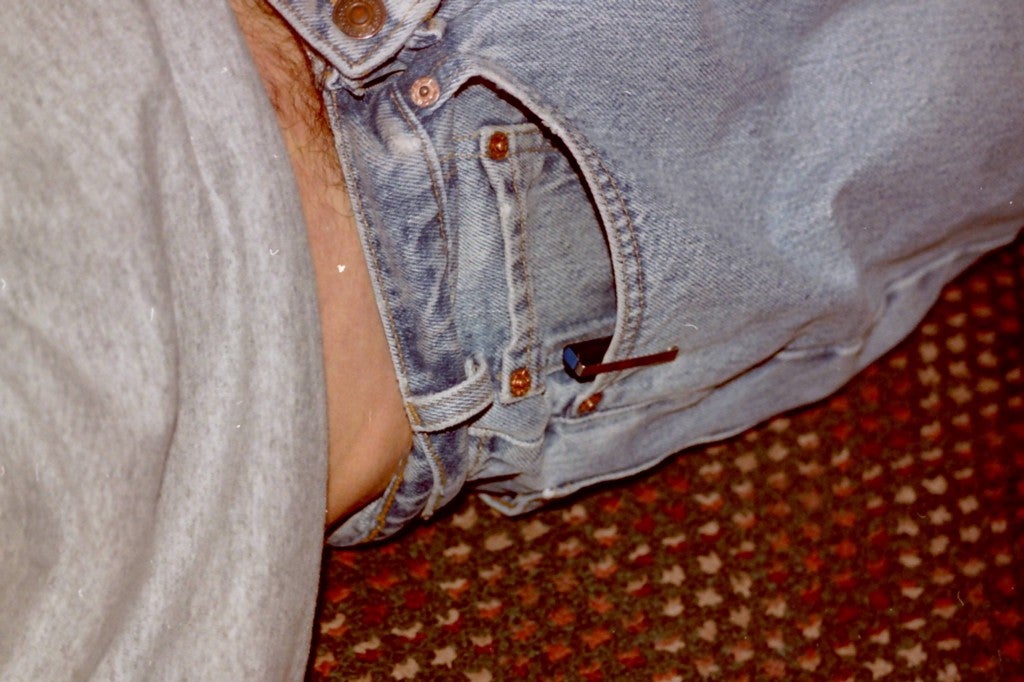
“He is really handsome,” declared one Redditor on r/UnresolvedMysteries, the favored sub for the mysterious and macabre. “I would run my hands through his hair. I think it’s natural to care more when a victim is good looking. I do.”
And seven months ago, over at r/LyleStevik, a small, friendly group of wannabe-sleuths had started a grassroots initiative to draw attention to Lyle’s story outside of the Websleuths community. They contacted the Seattle Times, the Idaho Statesman, the Vancouver Sun to try and bring new attention to the case. They made posters to distribute in Meridian, Idaho. They investigated the serial numbers on Lyle’s dollar bills to see where they originated. Everything was still a dead end.
They prayed salvation would come in the form of the Daily World Sunday — the newspaper Lyle had tossed in the trash in room five — likely the last thing he read. They sourced a copy from the Timberland Regional Library in Amanda Park. “Perhaps there will be a hint in the classifieds or obituaries,” suggested one Redditor.


That week’s edition of the Daily World Sunday was expectedly 9/11-heavy. “We will find you. You can no longer hide,” the paper quoted President George W. Bush. “Terrorism is akin to a huge demon octopus,” read an op-ed. “When one tentacle is severed, the body grows another. Now is the time to destroy the body wherever it hides.”
Some Redditors thought Lyle may have lost a loved one on 9/11 and traveled to Amanda Park to end his life. Some wondered if Lyle had read the hostile, combative opinions on the letters page, feared World War III on American soil and hanged himself. Others presented the most controversial theory yet: That Lyle was involved in the attacks.
“Given his coloring and the question of ethnicity, could he have been here as part of a terrorist plan and ended up backing out?” asked one Redditor. “Then, being ashamed, took his own life?”
Lyle could have fled Manhattan on 9/11, jumped on a train and arrived in Amanda Park by dinner time on 9/14, suggested one Redditor. (“Reports were forwarded to the FBI in case he was connected in some way, but we never heard anything [back] from them,” Youmans offered.)
The conversation soon spread to other subreddits. Experts and specialists — dentists, doctors, handwriting analysts — joined the dialogue. “The trauma on Lyle’s hands looks like Russell’s sign,” mused one Redditor, where calluses on the knuckles indicate frequent purging. A dermatologist agreed: “I noticed a healed scab on the middle knuckle. He probably purged shortly before his death and it healed over.”
Delove believed Lyle had lost a considerable amount of weight in a short time frame — up to 40 lbs — after observing his loose-fitting clothes. With this in mind, one Redditor pointed to the toothpaste and toothbrush in the drawer as evidence of an eating disorder: “Bulimics brush their teeth to get the taste of vomit out of their mouth. Most likely he bought them after he left home and after a binge.”
Why exactly did these strangers care so much?
“I think people want to solve these cases because they want to give a voice to someone who doesn’t have one,” said Lyndsay Sawler, a moderator at r/LyleStevik on Reddit. “I want to bring closure to a family who might be worried or mourning. I just hope that when it’s all over, someone misses him.”
Also, people really felt like they could maybe solve it.
Lyle’s story isn’t the first cold case that spearheaded an internet investigation. Citizen sleuths recently cracked the 20-year old mystery of Grateful Doe, a teenage car crash victim found in 1995 with two Grateful Dead ticket stubs in his pocket. When forums circulated a computer-generated image of his face on social media, an old college roommate recognized him. Grateful Doe became Jason Callahan; citizen sleuths gave him his name back.
Sawler hopes for a similar outcome for her Doe: “It’s a sad story, but one that myself and the other mods on the sub are hoping to one day solve. I think Lyle was someone who just needed a quiet, peaceful place to pass on. He found a hole-in-the-wall motel and decided that would be the place where he would end his life.”
“Lyle immediately caught my attention because he was young enough to be my son, and the circumstances — suicide, alone in a cheap motel — were so desperately sad,” said a commenter. “His polite little note with the money just broke my heart. I can’t shake the feeling that he killed himself because he believed no one cared about him. I wonder sometimes what he would think of the hundreds of strangers who care about him so much that they discuss him every day and spend hours trying to give him back his name.”
He doesn’t necessarily agree with everything, but Youmans welcomes all theories — no matter how far-fetched. “I’m the first to admit my theories may not be right,” he wrote. “I always try to put myself in the dead person’s place and imagine what I would do. It doesn’t always work, as people preparing to take their own life are not thinking logically.”
And he’s not giving up either. “This was a very unusual case. I still work on it, just to make sure Lyle’s loved ones know what happened to him and where he is buried.”
In life, Lyle went to extraordinary lengths to keep his identity a secret. In death, he was analyzed, dissected, and scrutinized. Without the mass speculation and collective conjecture of the internet, he would have been another unidentified decedent lying in an anonymous grave, another small town suicide victim that was quickly forgotten.
As the online forums buzzed with conjecture, in Amanda Park, it was still gray and drizzly. Still gloomy. Aunt Barb had retired from the Inn and Maricela had been promoted to manager. Life carried on, as usual, but Lyle had left an indelible mark.
“When I had my baby, I went to stay at the Inn,” wrote Maricela’s daughter Vanessa in a 2014 Facebook post. “I slept in the living room on the couch because it was easy for me to get the baby formula from the kitchen. I was in a deep sleep one night when I had the feeling of someone, or something, staring at me. When I looked up, I saw a man looking at me. Then I wiped my eyes and he was gone.”
That man, she said, was Lyle.
“Another night, one of my brothers fell asleep on the same couch,” she continued. “He was awoken by a noise coming from the kitchen. He thought it was me at first. He turned around and saw a man looking down at him. He was scared and started to scream. When my brother described him, it was the same man I saw.”
Maricela had told her family about Lyle. That drizzly Monday morning when she twisted the door handle and trepidatiously stepped inside room five. She remembered when Lyle asked her for more towels, when he told her he didn’t want his room cleaned.
“My mother told us Lyle was a kind man. But the night before his passing, he was rude,” wrote Vanessa.
“She doesn’t understand how he hanged himself in a closet alcove no bigger than four-and-a-half feet tall. To this day, my mom still wonders if it was murder.”
Either way, Vanessa says, her mother still lights a candle for the man with no name.

